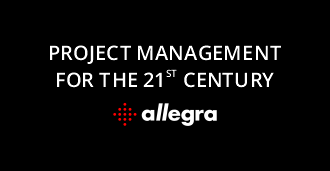Getting Things Done for Teams
Overview
We don’t often see people using the Getting Things Done (GTD) method for task management within their teams. Getting Things Done is a method of personal task management that helps people sort their tasks. There are many tools that use GTD as software for smartphones, tablets, or a regular PCs. However, in professional task management solutions, which almost always view task management in the context of collaboration, GTD is not common.
Task Analysis
As we well know, stuff appears in our thoughts, on our desks, or on our computers during the day. We can also refer to stuff as tasks.
Stuff includes ideas, project tasks, open items, bug reports, and customer requests. A recipient cannot directly influence the inflow of incoming tasks, but he or she can sort them with GTD.
All incoming tasks are first collected in the personal inbox, which is a type of basket. A basket is a folder or other container in a project management software. Your inbox receives tasks and regularly analyzes and categorizes them. It contains all tasks that have been newly assigned to you.
There are three possible outcomes of this analysis:
- A task is “actionable.” You need to do something about it.
- It is “not actionable.” Maybe, you need to note it and possibly file it somewhere, but it is not urgent.
- It requires a sequence of actions. This possibly involves several people over a long period of time, which necessitates planned actions. Scheduled tasks within planned actions can be, for example, a work breakdown structure for a project or a Scrum product backlog.
Actionable Tasks
Actionable tasks will be sorted into three baskets:
- Next actions: Here, you can place tasks that you want to work on in the near future. There is no real planning or deadline for next actions. If you have deadlines or dates in mind, then you should place these tasks in the calendar basket.
- Calendar: This is where you can place all time-dependent tasks, such as an appointment or a meeting. The calendar basket contains three types of actions: Appointments, Actions, Day, and Day-specific information.
- Delegated/waiting: This basket contains tasks that you have given to someone else.
Not Actionable Tasks
For not actionable tasks, there are also three baskets:
- Garbage: You will not further consider these tasks. They will be deleted at some point.
- Incubator: Tasks that do not require action at the moment are placed here. You might consider them later, but maybe not. These tasks can serve as the basis for future work. A few examples are ideas, wishes, improvements, etc.
- References/Favorites: This basket contains material that may one day be important or you need to frequently check up on, e.g. FAQ, requirements, standards, etc.
Planned Operations
You should review the basket for planned operations regularly. You can move these operations into one of the actionable baskets, if need be. This helps you keep your plans in sight.
Getting Things Done with Your Team
Getting Things Done is seriously helpful for teams when implemented well. For example, each employee can easily organize his or her personal task management with GTD. One can also assign individual resubmission dates for each task. In addition, one can delegate tasks and still remain in the observation area of the delegating person.
Instead of scrambling around your desktop while trying to find a certain document, you can make use of the reference basket. This is useful for keeping frequently used tasks and documents on hand (as favorites).
If you want to know more about the method, check out this article on GTD methodology or David Allen’s book. You can find a professional, team-oriented implementation of this approach with Allegra task management software.
Want some more task management methods? Another invaluable method is prioritizing tasks according to the Eisenhower principle.



